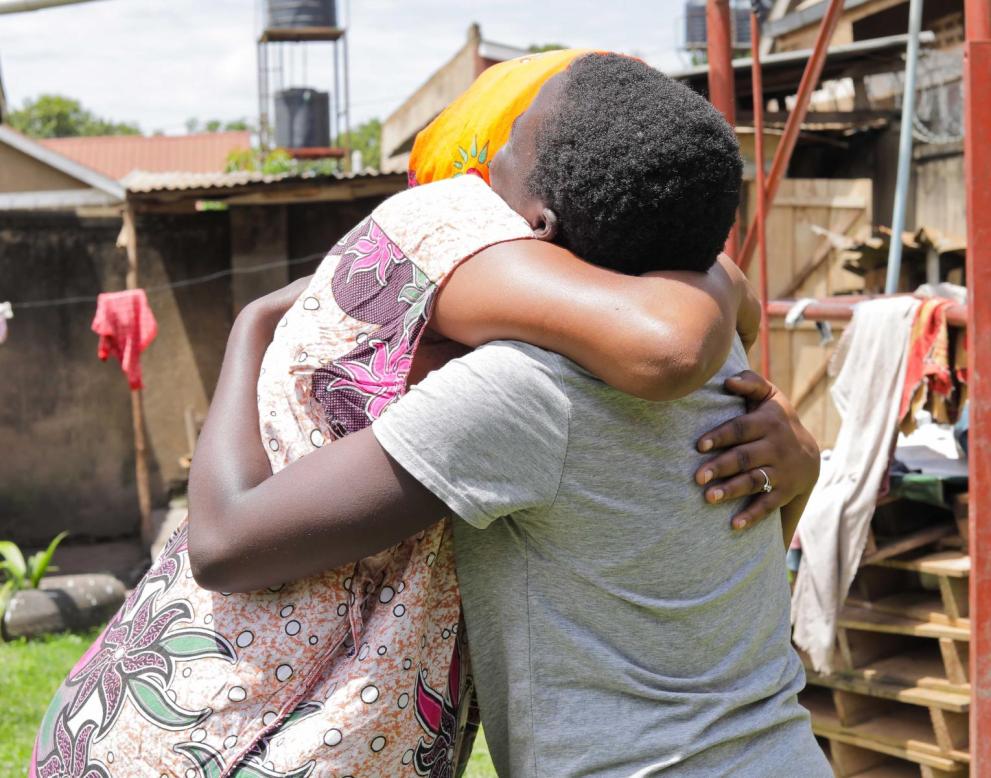
Miriam (name withheld) is a food vendor in Majengo, Kenya. Her business provides her and her family with a modest income. She also volunteers her time at Trace Kenya, a non-governmental, civil society organisation based in Mombasa that works to counter human trafficking. As a peer advisor and case worker, Miriam supports victims of trafficking. She has a unique perspective due to her own experience of being victim of trafficking. Trace Kenya rescued, rehabilitated and re-integrated her into society.
Even though Miriam’s life regained some normalcy, her traumatic experiences are still etched in her memory. ‘I don’t like to remember what happened to me’, says the 38-year-old. She was exploited and abused by her employer and received no pay. ‘When I returned, I had nothing and I wasn’t well’, explains Miriam.
Women and children are the main victims of global trafficking. In Kenya, they comprise 41 and 33 per cent respectively of all human trafficking cases.‘When large numbers of the population fall below the poverty line and when more and more households are headed by just one person or by a child, children and adults become potential victims’, says Paul Adhoch, Trace Kenya’s Executive Director.
National Referral Mechanism – a game changer
According to the Trafficking in Persons Report 2021 published by the US State Department, 363 victims were reported in Kenya in 2020. All victims that are identified go through the National Referral Mechanism to access support and reparative justice through the Victims Assistance Fund.
This structured process has contributed towards preventing human trafficking, protecting individuals and prosecuting the traffickers. ‘The mechanism is a game changer in assisting people like Miriam’, declares Paul Adhoch, who has worked on countering human trafficking for more than 15 years. ‘It provides guidelines and coordinated plans on how to identify and support victims of human trafficking. Once we have identified a victim, we know which pathway to follow, and who needs to be involved.’
In cases involving children victims of trafficking, Trace Kenya works with the Department of Children Services and the police, and collaborates with other partners to ensure the child will be kept in a rescue centre where they are safe and out of reach of the perpetrators while the case is ongoing. Trace Kenya helps the child overcome trauma by providing psychosocial support. The organisation also contacts family members and organises repatriation if the child is a foreigner. ‘We prosecute on behalf of the child, repatriate and conduct follow-up counselling services’, explains Paul Adhoch. The same process applies to adults. ‘Trace Kenya came to my rescue, they counselled me and provided financial assistance so I could re-start my life’, confirms a grateful Miriam.
Collecting data to improve victim support
The Government of Kenya also has a Child Protection Information Management System in place that captures data on human trafficking cases. ‘The data contributes to strengthening the referral mechanism and improving the care of victims as well,’ says Ruth Njuguna, Assistant Director of Children Services, within the Counter Trafficking in Persons Secretariat, which coordinates the activities of all the relevant agencies. The system also generates reports on the number of victims who have been rescued and the referral process.
‘The Secretariat works together with the relevant law enforcement agencies to rescue victims of trafficking’, says Ruth Njuguna. ‘It provides direct assistance to the victims, such as repatriation services, and it also works with other providers to ensure that victims of trafficking are given food, shelter and have interpreters to help them in court’, Ruth Njuguna explains.
The Secretariat has rolled-out the referral mechanism in 16 counties and has coordinated joint training for the relevant law enforcement officers, such as the police and other authorities. ‘This has increased the numbers being rescued’, Ruth Njuguna observes. ‘The police and prosecutors are able to identify any cases of trafficking and handle them in accordance with the existing law. We have made progress as a country,’ she says.
Background
The Better Migration Management (BMM) programme is financed by the European Union through the EU Emergency Trust Fund for Africa and the German Federal Ministry for Economic Cooperation and Development (BMZ). Its objective is to apply a human rights-based approach to improve the safe and orderly regular management of migration within the Horn of Africa. This includes the provision of appropriate assistance and support for victims of human trafficking. In Kenya, BMM supports the dissemination of the National Referral Mechanism through Trace Kenya and coordinates with the Counter Trafficking in Persons Secretariat in six coastal counties. Representatives from local governments, civil society and the media have benefited from training and awareness-raising activities about human trafficking and victim identification, legal frameworks and referral structures.
Details
- Publication date
- 13 December 2021
- Region and Country
- Horn of Africa
- Thematic
- Improved migration management
- Partner
- GIZ

